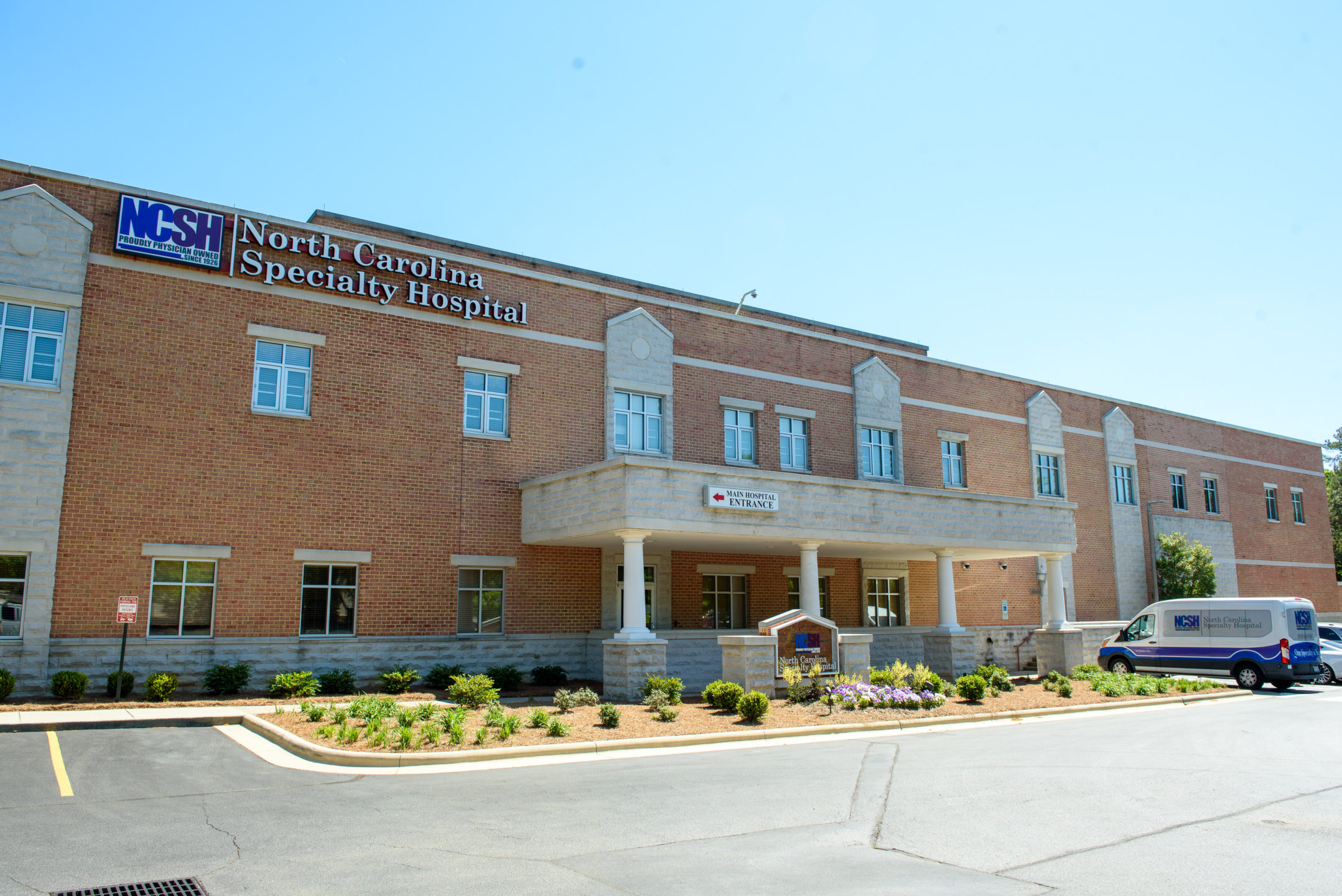Access your own patient portal, provided by NCSH.

Surgery
Suffering From Elbow Pain? Find Out Your Best Tennis Elbow Treatment
Tennis elbow, or lateral epicondylitis, is a painful inflammation of, or tears to, the tendons that join the forearm muscles to the elbow. It happens from continually repeating incorrect arm and wrist movements, causing muscle strain and injury.

If you’re a tennis player, several studies show the chance is practically 50/50 that you could develop tennis elbow from poor technique. Ironically, however, the majority of people who experience tennis elbow don’t play tennis at all.
If you suspect you’re suffering from tennis elbow or your doctor diagnoses it, what are the best tennis elbow treatments to help relieve your pain? The sports medicine experts at North Carolina Specialty Hospital explain what to expect if you are diagnosed with this condition.
Serving up the Best Treatments for Tennis Elbow
Anyone who repeatedly uses their hand, wrist, and forearm incorrectly can develop tennis elbow. That means typing and moving a mouse; painting and using wrenches, drills and other tools; playing golf, baseball and softball; chopping food; gardening; or even using scissors can cause tennis elbow. Talk to your North Carolina Specialty Hospital sports medicine experts when your activities cause you to experience symptoms including:
- Pain or a burning feeling in your outer elbow that may worsen when you twist or bend your arm
- A swollen elbow joint and/or bump or bulge on your elbow
- A weakened grip when you try to hold a racket, a pen, a brush, a coffee cup, or someone’s hand
These symptoms may come on slowly and build as overuse continues. We may order an X-ray or MRI to rule out more severe conditions (such as arthritis or a broken bone) or an EMG to rule out compressed nerves, but those are usually not necessary.
Once you are diagnosed, the best tennis elbow treatments are:
Rest: You give the tendons time to heal by stopping or drastically reducing their use for several weeks.
Medication: You may be told to use NSAIDs (nonsteroidal anti-inflammatory drugs) to ease pain and inflammation.
Support: You may be advised to use a removable brace, wear a splint, or have your forearm taped to take pressure off tendons and muscles.
Physical therapy and massage: You may be prescribed exercises and massage to strengthen and stimulate your muscles.
Steroid injections: These are given for temporary pain and inflammation relief.
Platelet-rich plasma (PRP) therapy: Platelets, which aid in healing, are separated from your blood and injected into the injured area.
These non-surgical treatments can be followed for several months. If symptoms don’t improve after 6 to 12 months, surgical options may be discussed. However, 80-95 percent of patients improve with non-surgical treatments.
If your symptoms don’t improve, your North Carolina Specialty Hospital sports medicine physician will work closely with you and your care team to develop the best action plan for your situation.
You’ll Win Game, Set, and Match with North Carolina Specialty Hospital
We have the latest technologies in our sports medicine department to bring about optimum results and pain relief.
- If surgery is recommended, we may perform TenJet. This is a minimally invasive procedure using a needle device that removes degenerative tendon tissues.
- However, if more invasive surgery is required, we would remove damaged tendons and muscles via arthroscopic surgery or debridement. These procedures replace the injured tissue with healthy tendon and muscle from elsewhere in your body. (Recovery from these procedures can take up to six months.)
Regardless of whether non-surgical or surgical treatments are prescribed, our sports medicine experts and entire orthopedic department are with you for every part of your diagnosis, treatment, and recovery. It’s the commitment we made to our patients when we first opened the doors to North Carolina Specialty Hospital in 1926, and it’s still our number one commitment nearly a century later. We’ll also ensure you have the best tools for tennis elbow prevention, including stretching and strengthening exercises, and any bracing or support that can help.
So if you’re experiencing pain and suspect you have tennis elbow, there’s no need to keep suffering. Instead, you should request an appointment with one of our orthopedic sports medicine physicians here. Or, contact us. Either way, we look forward to stopping the pain and damage you’re experiencing and helping you get back on the tennis court, the golf course, or the job soon.
Stay Current
Educational Articles & More
View News & Press